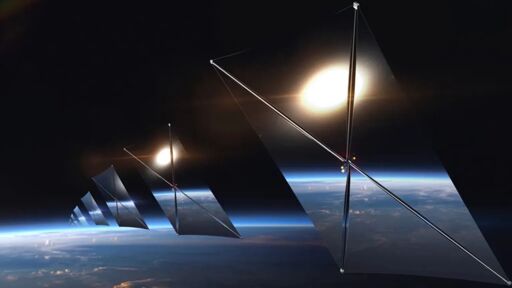California-based startup Reflect Orbital aims to build a swarm of 4,000 giant mirrors in low Earth orbit to “sell sunlight” to customers at night. Experts warn that the mirrors could mess with telescopes, blind stargazers and impact the environment.
Reflect Orbital, which was founded in 2021, has recently taken the first step in a scheme to sell sunlight at night by bouncing solar rays off giant “reflectors” that can redirect the vital resource almost anywhere on our planet. By doing this, the company aims to extend daylight hours in specific locations, thus allowing paying customers to generate solar power, grow crops and replace urban lighting.
But experts say it is a wildly impractical plan that should never get off the ground. What’s more, the resulting light pollution could devastate ground-based astronomy, distract aircraft pilots and even blind stargazers.



The aiming is still a problem. The Hubble is relatively small. Even then, it can’t track fast enough to image the moon, let alone the earth’s surface.
Any useful reflector would be measured in Km^2 . Aiming that, with the same precision as Hubble would be a tall order. Added to that, the mirror would have to be light enough to launch. You’re basically trying to aim a sheet of tinfoil, as large as a stadium (minimum), with active tracking.
The Hubble is also in a rather low Earth orbit (340-ish miles), which enables it to use magnetic brakes which allow it to ditch the excess energy from its reaction wheels into the Earth’s magnetic field so it can stop pivoting when it aims. The further away you get from the planet the less effective that becomes. The bigger your object is, the bigger your reaction mass needs to be.
And the Hubble doesn’t inherently roast or blind innocent bystanders as it swings its point of aim across all of the intervening space between its targets. Maintaining a steady shine on one particular point on the surface is one thing, but these idiots seem to be implying that they will sell sunlight-as-a-service via some kind of subscription model to multiple customers, so they would presumably be changing targets all the time.
The Hubble can only rotate very slowly. Per the article, 90 degrees in about fifteen minutes. Its advantage is that it only looks at targets that are very far away and hold still relative to the Earth, so there is very little parallax to worry about. If you wanted to go faster you probably can’t use the reaction wheel method that it does; you’d have to use thrusters which would consume finite fuel that’d eventually (or quickly) run out, and at that rate there’s no way you could do it as accurately. For the Hubble specifically, the amount of time it takes to get on a target is broadly irrelevant, only that it can keep itself there once it eventually achieves targeting. This would not be so with the hypothetical solar reflectors, regardless of what altitude they were flown at. And low altitude orbits would be the worst, because they’d be flying over the target’s head at tens of thousands of miles per hour in terms of ground speed and would have to rotate very quickly in order to remain even vaguely pointed in the right direction.